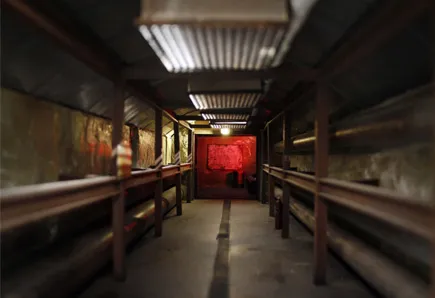

Sommersemester 2022
Seminar, Bachelor Architektur, Prof. Andreas Kretzer
Horror in Architecture
Grauenvolle Architektur
„There is no exquisite beauty without some strangeness in the proportions.“ Edgar Allen Poe
Sublime Horror
Why spend time on horrifying things? Isn‘t life difficult enough?
Antonio Rocco, as early as 1635, argued that we should look at problematic subjects because they are instructive. And because their opposite, anodyne beauty, contains
a dangerous surfeit of sweetness. Deviance teaches; charm will make you sick.
Rocco claimed that horrors in particular – putrefaction, decay, distortion and dissymmetry among others – are sites of fertility, change, and invention.
In the case of architecture, horror appears particularly urgent.
Firstly, because its experience is immanent in the project of the modern – it closely shadows the disconcerting scalar and typological growth of our built environment. Second, because its unique character is increasingly relevant in what we might call an „age of affect,“ in an emergent politics of the sublime where the ecstatic and the shocking pose as alternatives to older Enlightenment values.
Thirdly – and not least – because horror is terribly effective in queering the assumptions of contemporary design practice. lt deserves to be rehabilitated, because its violence
is useful. It is a kind of Nietzschean operation. Its gleeful dismemberments, its deviant physicality, oppose the creep of reification and the comfort of well-tempered surfaces.
To put it another way: horror is the truth about abstraction.
Joshua Comaroff & Ong Ker-Shing